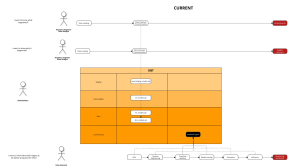The finance industry has been one of the most significant beneficiaries of the data science revolution. The ability to harness vast amounts of data for insightful analytics has transformed decision-making processes, enabling CEOs and financial leaders to execute strategies with precision and foresight.

New Frontier in Risk Management
Risk analytics has evolved beyond traditional models to incorporate sophisticated algorithms that predict potential pitfalls in real-time. By leveraging data science, financial institutions can now anticipate market fluctuations, credit risks, and operational vulnerabilities with greater accuracy, ensuring that strategic decisions are both informed and timely.
Decision-Making at the Speed of Data
The agility to make decisions based on live data streams rather than historical analysis is a game-changer. Real-time analytics empower financial leaders to respond to market changes instantaneously, securing opportunities that would otherwise be missed and avoiding pitfalls that were not apparent in past data.
Understanding the Pulse of the Customer
Data science enables a granular understanding of consumer behavior, preferences, and trends. Financial institutions can now tailor their offerings to individual needs, enhancing customer satisfaction and loyalty. This personalization is not just a marketing tool; it’s a strategic imperative in a customer-centric financial landscape.
The Goldmine of Customer Data
The management of customer data, both structured and unstructured, is a cornerstone of modern finance. Big data technologies have revolutionized the way financial institutions collect, process, and analyze data, providing a 360-degree view of the customer that informs every aspect of business operations.
Tailoring Financial Services for Every Customer
The financial sector is leveraging data science to offer personalized services, from banking to insurance. By understanding individual customer journeys, financial services can be customized, leading to increased engagement and profitability.
Safeguarding Assets with Data Science
The fight against financial fraud is being bolstered by data science. Advanced analytics and machine learning models are now capable of detecting anomalies and patterns indicative of fraudulent activity, safeguarding assets and maintaining customer trust.
The Algorithmic Edge in Trading
Algorithmic trading represents the pinnacle of applying data science in finance, where complex mathematical models are executed at lightning speeds. This enables the development of innovative trading strategies, giving financial institutions an edge in the highly competitive markets.
Conclusion
The integration of data science into finance is not just a trend; it’s the future. As financial institutions continue to embrace this technology, we will see even more innovative applications that drive efficiency, customer satisfaction, and profitability. For CEOs, understanding and leveraging data science is no longer optional—it’s essential for success in the digital age.
- Elevating Wellness through Data-Driven Personalization: Restore Case Study - November 11, 2023
- Revolutionizing Credit Risk Management: Ameriprise Financial’s ML Leap - November 10, 2023
- Elevating Customer Engagement: VinID’s Personalization Strategy - November 9, 2023



